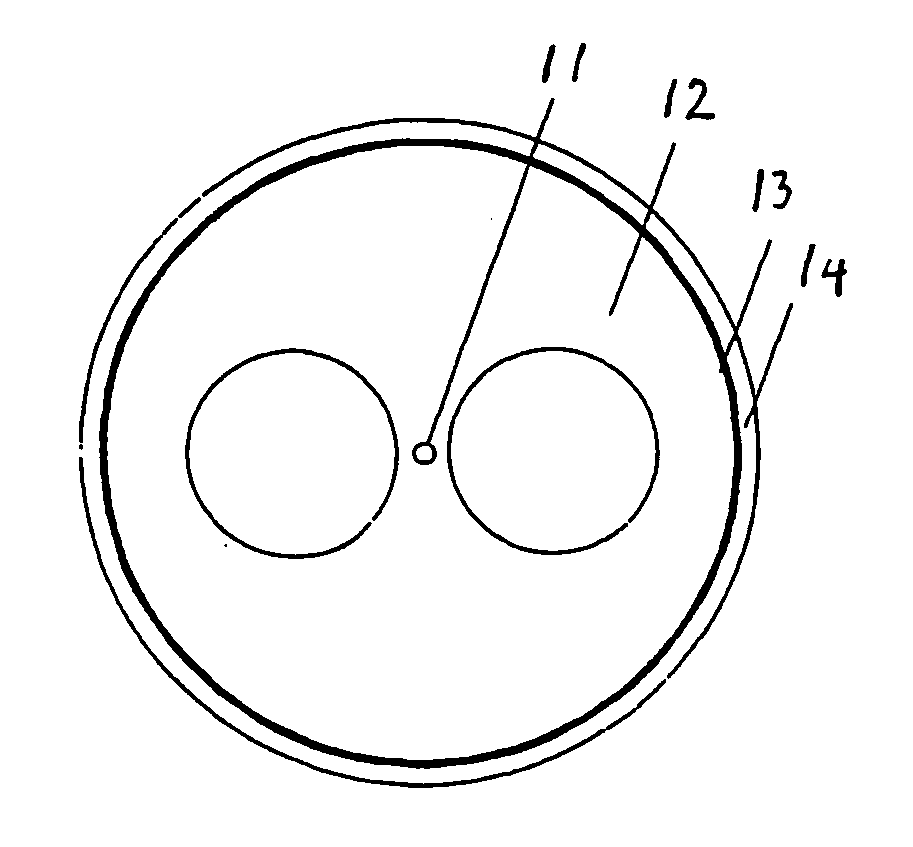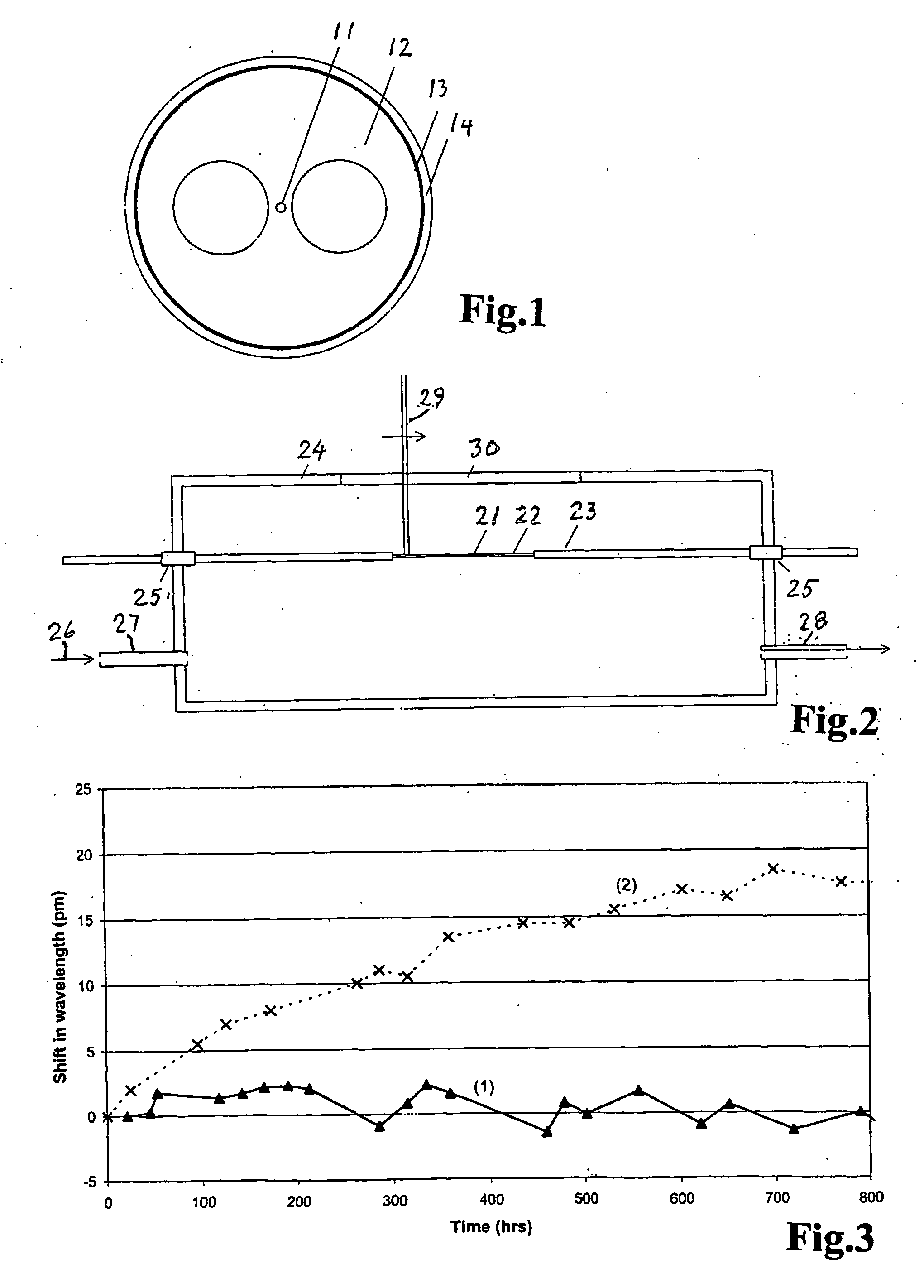Method for preparing an optical fibre, optical fibre and use of such
a technology of optical fibres and gratings, applied in the field of preparing optical fibres, can solve the problems of optical fibre loss increase, standard fbg, coating application, etc., and achieve the effects of reducing the number of processing steps
- Summary
- Abstract
- Description
- Claims
- Application Information
AI Technical Summary
Benefits of technology
Problems solved by technology
Method used
Image
Examples
Embodiment Construction
[0015] In the following, the invention will be described with reference to illustrations, where
[0016] FIG. 1 shows the cross-section of a chemical FBG written in a side-hole fibre with a carbon coating and a secondary polyimide coating.
[0017] FIG. 2 is a schematic illustration of a chamber for recoating a high temperature FBG with carbon.
[0018] FIG. 3 shows the long-term drift in Bragg wavelength of a chemical FBG exposed to silicon oil at 200.degree. C., both with and without carbon recoating.
[0019] FIG. 1 shows the cross-section of a chemical FBG in the core (1) of a side-hole fibre (2) with a carbon coating (3) formed by a pyrolytic process and a secondary polyimide coating (4) to protect the carbon coated FBG.
[0020] FIG. 2 is a schematic illustration of a chamber for recoating a high temperature FBG, such as a grating, with carbon. A chemical high temperature grating (1) in a stripped section (2) of an optical fibre (3) is placed inside a sealed chamber (4). The fibre is enterin...
PUM
| Property | Measurement | Unit |
|---|---|---|
| Temperature | aaaaa | aaaaa |
| Angle | aaaaa | aaaaa |
| Temperature | aaaaa | aaaaa |
Abstract
Description
Claims
Application Information
 Login to View More
Login to View More - R&D
- Intellectual Property
- Life Sciences
- Materials
- Tech Scout
- Unparalleled Data Quality
- Higher Quality Content
- 60% Fewer Hallucinations
Browse by: Latest US Patents, China's latest patents, Technical Efficacy Thesaurus, Application Domain, Technology Topic, Popular Technical Reports.
© 2025 PatSnap. All rights reserved.Legal|Privacy policy|Modern Slavery Act Transparency Statement|Sitemap|About US| Contact US: help@patsnap.com


